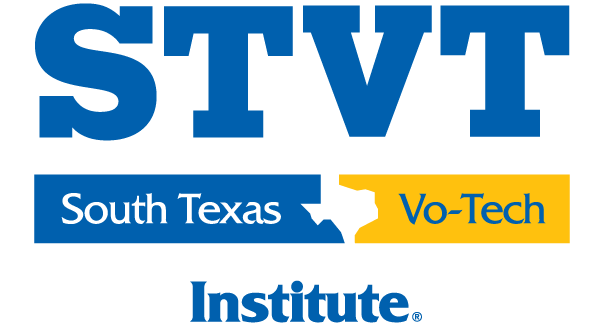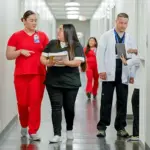Thinking about a career in truck driving or commercial transportation? You’ll need a Commercial Driver’s License (CDL), and the good news is, getting one is more accessible than ever.
This guide breaks down everything you need to know to get your CDL and launch your career behind the wheel. But before you jump behind the wheel of a big rig, there are a few things you need to know. This blog will guide you through the steps to get your CDL, with a special focus on the requirements for a Class A CDL, one of the most versatile licenses available.
When Is a CDL Required?
So, you don’t need a CDL to drive every big vehicle on the road. A regular driver’s license is enough for some smaller commercial vehicles. But if you plan on operating any of the following, you’ll need to get your CDL:
- Large trucks: This includes tractor-trailers, dump trucks, and other vehicles with a Gross Combination Weight Rating (GCWR) of over 26,001 pounds.
- Buses: This applies to school buses, charter buses, and any other passenger vehicle designed to carry more than 15 passengers (including the driver).
- Hazmat Vehicles: If you’ll be transporting hazardous materials like gasoline or chemicals, you’ll need a special endorsement on your CDL.
What Are the Requirements for a CDL in Texas?
Texas follows all the general CDL requirements mentioned above. Here are some additional details specific to the Lone Star State:
- You can apply for a learner’s permit (CLP) at 18 years old to begin practicing with a licensed CDL holder.
- The Texas Department of Public Safety (DPS) offers a CDL handbook
- that covers everything you’ll need to know for the knowledge tests.
- Not all DPS offices offer CDL skills testing, so be sure to check with your local office beforehand.
Step 1: Know the Basic Requirements for A CDL License
Before you can apply for a CDL, you’ll need to:
- Be at least 18 years old (21+ for interstate driving)
- Hold a valid driver’s license
- Have a clean driving record
- Pass a Department of Transportation (DOT) physical exam
- Show proof of U.S. citizenship or lawful presence
These rules help ensure safety for both drivers and others on the road.
Step 2: Choose the Right CDL License
There are three main types of CDLs, depending on the vehicle you plan to drive:
| CDL Class | Vehicle Type | Best For |
| Class A | Combination vehicles (e.g., tractor-trailers) | Long-haul trucking |
| Class B | Single vehicles (e.g., delivery trucks, school buses) | Local/regional driving |
| Class C | Small commercial vehicles (e.g., vans, HAZMAT vehicles) | Niche or specialty driving |
Most students choose Class A, since it offers the broadest job opportunities.
Step 3: Complete CDL Training
While it’s technically possible to study and test on your own, CDL training programs are strongly recommended and often required by employers.
Programs typically include:
- Classroom instruction (rules, regulations, logbooks)
- Hands-on driving practice on commercial vehicles
- Pre-trip inspections and defensive driving drills
- Prep for the written knowledge test and skills exam
At STVT, the CDL program is designed to support students with real equipment, experienced instructors, and job placement resources.
Step 4: Pass the CDL Knowledge Test (CLP Exam)
Before you can take the road skills test, you’ll need to pass the Commercial Learner Permit (CLP) written knowledge test, required by the Texas Department of Public Safety (DPS). This multiple-choice exam covers essential topics like:
- Vehicle operation and safety
- Basic control and inspections
- Air brake systems (if applicable)
- Road signs, Texas traffic laws, and emergency procedures
Depending on the type of driving job you want, you may also need to pass endorsement exams for:
- Tanker vehicles
- Hazardous materials (HAZMAT)
- Passenger vehicles (buses)
For Texas-specific prep, you can review the Texas CDL Handbook (PDF) or visit the DPS CDL requirements page.
Step 5: Pass the CDL Skills Test (Texas DPS Road Exam)
Once you’ve passed your knowledge test and received your Commercial Learner Permit (CLP), your next step is the CDL Skills Test, a three-part practical exam administered by a Texas Department of Public Safety (DPS) testing site or a certified third-party provider.
The skills test includes:
- Pre-trip vehicle inspection: Show that you can inspect key safety systems and explain their importance
- Basic vehicle control: Demonstrate maneuvers like straight-line backing, offset backing, and alley docking
- On-road driving test: Drive in real traffic while demonstrating safe lane changes, turns, braking, and gear use
Important: You must take the skills test in the same class and type of vehicle you intend to be licensed for (e.g., a full-size tractor-trailer for a Class A CDL).
Tip: In Texas, you can schedule your CDL Skills Test through the DPS or an approved third-party examiner. You’ll need to wait at least 14 days after receiving your CLP before testing.
Learn more: Texas CDL Testing Info – DPS
CDL Costs and Financial Aid
Costs vary, but most CDL programs range from $3,000 to $7,000. At STVT, financial aid options are available for those who qualify, including:
- Grants and loans
- Military education benefits
- Employer tuition assistance or sponsorships
Many drivers see a strong return on investment once hired.
Job Outlook for CDL Holders
The demand for commercial drivers remains high. According to the Bureau of Labor Statistics:
- The industry expects well over 90,000 annual job openings through 2034
- Specialized endorsements (e.g., HAZMAT) can lead to even higher earnings
Start Your CDL Journey with STVT
STVT’s CDL Training Program gives students:
- Hands-on driving instruction with real equipment
- Support in preparing for both written and driving exams
- Career services to help you get hired once you’re licensed
Whether you’re switching careers or starting fresh, STVT can help you drive your future forward.
FAQs About Getting a CDL
Q: How long does it take to get a CDL?
A: With full-time training, most students earn their CDL in 3–6 months. Some finish faster with accelerated programs.
Q: Can I get a CDL without going to school?
A: Technically yes, but it’s much harder. Most employers prefer or require training from a certified program.
Q: Is the CDL test hard?
A: It can be challenging without prep. Good training programs like STVT’s help you build the skills and confidence to pass.
Q: What’s the difference between Class A and Class B?
A: Class A covers larger, combination vehicles like tractor-trailers. Class B is for single vehicles like buses or dump trucks.
South Texas Vocational Technology Institute (STVT) Offers Class A and Class B CDL Programs!
South Texas Vocational Technical Institute offers the CDL Training: Class A Tractor-Trailer Program at all six of its campus locations, providing training for aspiring commercial drivers. Additionally, our Arlington campus offers a specialized CDL Training: Class B Program tailored to meet the needs of local drivers. We can help you get the training for the future you want. Take the next step in your journey with the vocational or skills-based education available at STVT.
Contact STVT today at (866)-480-9766 or fill out this form to learn more about how we can help you get your CDL and hit the road to success!
Disclaimers: Information within this blog is for general information purposes only. South Texas Vocational Technical Institute does not assume or guarantee certification/licensures, specific job/career positions, income earning potential, or salary expectations based on the programs offered at South Texas Vocational Technical Institute. Career and program information statements in this blog do not guarantee that programs or other information mentioned are offered at South Texas Vocational Technical Institute.


